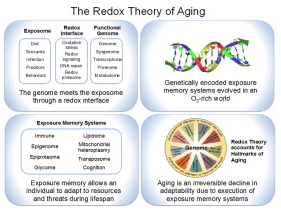By: Sumitra Miriyala, Ph.D., LSU Health Sciences Center
 SFRBM: Tell us about your background and when did you realize you were interested in science?
SFRBM: Tell us about your background and when did you realize you were interested in science?
My initial realization of a love for science began in elementary school while performing a science fair project on different cellular functions of the brain. Soon after, I realized that I was fascinated with the idea of how tissues within organs work and how biochemical responses contribute to pathophysiology. This has guided my formal education and still contributes to my current research program.
SFRBM: Who has been your greatest teacher? What do you think the most important factors are that have shaped your career?
I have been lucky to have had input and advice from many outstanding teachers and mentors in the areas of free radical research, physiology and pathology over the years. However, I consider myself quite fortunate to have had two excellent free radical/redox biology leaders, Drs. Matthew Grisham and Victor Darley-Usmar, as outstanding teachers during my graduate and fellowship training. Their instruction helped me establish an important appreciation for free radical and redox biology research during disease that still impacts my research program today.
SFRBM: Briefly describe your research interest and what is the most notable research achievement from your lab?
My research interest centers on redox regulation of adaptive and pathophysiological vascular growth and remodeling. In my graduate work, I was keenly interested in how peroxides altered endothelial cell functions (e.g. solute barrier, growth, and inflammation properties). Over the years, it has become clear that several other redox molecules (e.g. GSH, NO, and H2S) also critically influence endothelial cell and vascular functions. From this collective interest, my research group has revealed that redox networks work together regulating numerous vascular functions. As for a notable research achievement, that’s a difficult question. It’s always challenging (if not impossible) to judge the impact of one’s own work. However, if pressed, I would say that our group has made significant strides in revealing the importance of GSH and NO metabolites for ischemic vascular remodeling along with identification of therapeutic strategies that have been tested in clinical trials. But, this area of investigation is still ‘young’ (so am I-I think!) and I believe more exciting discoveries are yet to come.
SFRBM: What do you think is the direction the Oxidative Stress field is heading?
I believe oxidative stress or redox biology is heading in several directions with disease and clinical based studies being an important area. However, as the Society is a leading ‘steward’ of the area, it is important that we collectively work to educate and enlighten the broader research community with a sense of collegiality and collaboration. I also believe future areas of oxidative stress will be in large network studies coupled with genomics, metabolomics and proteomics. I believe we are merely scratching the surface of the biochemical complexity of our field and have such little clear insight into how it cooperatively functions with other molecular systems.
SFRBM: In the current climate in which investigators are faced with decreased NIH funding for research and low morale, what is the best advice?
Collaboration, cleverness and persistence. In this current climate, we are all challenged to be the absolute best that we can be. Often times, this alone will not win the day. It is important to remember that collaboration with colleagues and experts beyond your area of expertise may provide new avenues and opportunities for funding. Persistence (a.k.a. ‘grit’) is also an overlooked attribute that is, of course, less glamorous but very important. Finally, I have also found that asking an important question regarding a poorly understood problem or topic is key in convincing a reviewer or study section that your project is meritorious and should be funded.
SFRBM: Being a mentor, you have shaped many students (graduate and postdoc) to enter academic and industry research, any tips how to shape individuals for these scientific fields?
I have found it important to help trainees identify what their true skills and strengths are so that they can begin to build a productive career from the beginning. I also encourage individuals to reflect on what it is they get enjoyment and pleasure from in science, as we all know that experiments fail and papers and grants may get rejected. Having a good sense of perspective and purpose are important over the course of one’s career.
SFRBM: The Center for Cardiovascular Diseases and Sciences at LSU Health Science Center Shreveport has recently been approved by the Louisiana Board of Regents and you now serve as the Director for this program can you explain the benefits this center can contribute to the scientific field?
Our new Center for Cardiovascular Diseases and Sciences (CCDS) provides several unique opportunities for redox biology research. Investigators at LSU Health Shreveport have had a long-standing history in oxidative stress and free radical research related to cardiovascular disease and inflammation. The newly established CCDS builds from this foundation and is extending into new areas of redox biology of cardiovascular disease including mitochondrial function, hydrogen sulfide metabolism, nitric oxide metabolism along with applications in disease models and translational clinical studies. We also have strong infrastructure supporting animal, molecular and redox biology studies coupled with a highly collaborative environment between numerous investigators.
SFRBM: How has science/research changed during your life as a scientist?
The state of scientific research has changed considerably over the years. What I have noticed the most difference in is the scale and magnitude of research. Today, big data initiatives (omics and others), accurate disease modeling and cross discipline collaboration are critically important areas for research success.
SFRBM: How important is the SFRBM conference to you and your trainees?
The annual SFRBM meeting is very important for myself and members of my laboratory. It provides numerous opportunities to network with old and new friends, learn the latest scientific developments and provide valuable educational opportunities through the pre-meeting workshop and Sunrise Free Radical school.
SFRBM: What are your hobbies outside the laboratory?
I enjoy traveling, hiking and fishing with my family and friends.
— Published
Category: SfRBM Member Profile
By: Dean P. Jones, Emory University
Click here to view the full article in the journal Redox Biology
 Metazoan genomes encode exposure memory systems to enhance survival and reproductive potential by providing mechanisms for an individual to adjust during lifespan to environmental resources and challenges. These systems are inherently redox networks, arising during evolution of complex systems with O2 as a major determinant of bioenergetics, metabolic and structural organization, defense, and reproduction. The network structure decreases flexibility from conception onward due to differentiation and cumulative responses to environment (exposome). The redox theory of aging is that aging is a decline in plasticity of genome–exposome interaction that occurs as a consequence of execution of differentiation and exposure memory systems. This includes compromised mitochondrial and bioenergetic flexibility, impaired food utilization and metabolic homeostasis, decreased barrier and defense capabilities and loss of reproductive fidelity and fecundity. This theory accounts for hallmarks of aging, including failure to maintain oxidative or xenobiotic defenses, mitochondrial integrity, proteostasis, barrier structures, DNA repair, telomeres, immune function, metabolic regulation and regenerative capacity.
Metazoan genomes encode exposure memory systems to enhance survival and reproductive potential by providing mechanisms for an individual to adjust during lifespan to environmental resources and challenges. These systems are inherently redox networks, arising during evolution of complex systems with O2 as a major determinant of bioenergetics, metabolic and structural organization, defense, and reproduction. The network structure decreases flexibility from conception onward due to differentiation and cumulative responses to environment (exposome). The redox theory of aging is that aging is a decline in plasticity of genome–exposome interaction that occurs as a consequence of execution of differentiation and exposure memory systems. This includes compromised mitochondrial and bioenergetic flexibility, impaired food utilization and metabolic homeostasis, decreased barrier and defense capabilities and loss of reproductive fidelity and fecundity. This theory accounts for hallmarks of aging, including failure to maintain oxidative or xenobiotic defenses, mitochondrial integrity, proteostasis, barrier structures, DNA repair, telomeres, immune function, metabolic regulation and regenerative capacity.
— Published
Categories: Education, Redox Biology
 By: Dr. Jack Lancaster (http://www.doctorno.org)
By: Dr. Jack Lancaster (http://www.doctorno.org)
For those of you who are graduate students or postdocs, it might seem like you’ve been in school forever! However, consider the three major segments of the entire time span of a career as an independent investigator:
Check out the time differences of training compared to independence: ≈ 8-fold. So as a foundation for your future, what do you want to develop during this initial critical 12% training time?
As much as you can, eschew specialization. In spite of what your institution may have embedded in its training program, the best and most rewarding path is to, as the Biochemist and writer Isaac Asomov advocated, cultivate “A View from a Height”.
Don’t sell yourself short!
So during this critical 12% training period, challenge yourself in the most rigorous pursuits in Mathematics, Physics, and Chemistry you can find because this will equip you with the tools to truly understand phenomena on the most defining (molecular) level.
Then, throughout your long career you can apply to any Biological query all these wonderful universal physical concepts that must apply to all of Biology. And the more fundamental and interdisciplinary your skillset, the more puzzles you will be attracted to to solve, and the more significant they will be. And that’s a pretty good description for the successful career of a lifelong “lover of knowledge” (i.e., PhD).
— Published
Category: Education